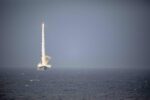Australia has committed AU$1.7 billion (approx. US$1.13 billion) to accelerate production of the Ghost Shark autonomous submarine under a program led by Anduril Australia in partnership with the Royal Australian Navy and Defence Science and Technology Group (DSTG). The deal marks a significant step toward fielding large uncrewed underwater vehicles (XL-AUVs) as a core component of Australia’s future undersea warfare strategy.
Ghost Shark Program Overview
The Ghost Shark is an extra-large autonomous undersea vehicle (XL-AUV) designed for long-range, high-endurance missions without human operators onboard. Developed by Anduril Australia in collaboration with DSTG and the Royal Australian Navy under a co-development agreement initiated in 2022, the platform is intended to perform intelligence gathering, surveillance and reconnaissance (ISR), anti-submarine warfare support, seabed warfare tasks, and potentially strike missions depending on payload configurations.
The vehicle reportedly measures around 12 meters in length with a displacement of several tonnes—comparable to a small conventional submarine but without crew accommodations or life-support systems. This allows for greater internal volume dedicated to sensors, payloads, power systems and autonomy stacks.
Ghost Shark is designed for modularity and rapid manufacturing using advanced composite materials and additive manufacturing techniques. The system leverages Anduril’s Lattice OS for mission autonomy and sensor fusion across multiple domains.
Contract Details and Timeline
The AU$1.7 billion contract announced in September 2025 follows successful prototyping milestones achieved since 2022. Three Ghost Shark prototypes were delivered ahead of schedule by mid-2024—a rare feat in defense acquisition programs involving novel platforms.
This new tranche of funding will enable low-rate initial production (LRIP) beginning in late 2025 or early 2026 and aims to deliver operational capability before the end of this decade. According to Australian Defence Minister Richard Marles, the first operational Ghost Sharks are expected to enter service as early as 2026–27.
The program is being executed under an agile acquisition model that emphasizes iterative development cycles and close integration between industry developers and military end-users—a hallmark of recent Anduril-led projects globally.
Strategic Context: AUKUS Pillar II & Indo-Pacific Posture
The Ghost Shark initiative aligns closely with AUKUS Pillar II objectives focused on advanced capability development beyond nuclear-powered submarines (Pillar I). Autonomous underwater vehicles are seen as critical force multipliers that can complement manned platforms like the future SSN-AUKUS class while reducing operational risk and cost per mission.
Increased tensions across the Indo-Pacific—particularly concerning Chinese maritime assertiveness—have driven Canberra’s interest in rapidly deployable asymmetric capabilities such as uncrewed systems that can operate persistently across vast oceanic distances without detection or escalation risk.
The XL-AUVs offer advantages including:
- Stealthy ISR collection near contested areas
- Saturation of adversary ASW sensors through distributed operations
- Seabed infrastructure monitoring or sabotage
- Cargo/logistics resupply or decoy roles
Industrial Base Implications & Sovereign Capability Development
This contract significantly boosts Australia’s sovereign industrial base for autonomous maritime systems. The vehicles will be manufactured domestically at Anduril’s Sydney facility using local supply chains where feasible—supporting skilled jobs in robotics engineering, composite fabrication, software development and naval integration.
Anduril has stated that more than half of all program workshare will be conducted within Australia by mid-production stages. This includes not just final assembly but also key subsystems such as propulsion units, batteries/power management modules, sensor integration frameworks and mission planning software tailored for Royal Australian Navy use cases.
The project also serves as a testbed for broader defense innovation practices within Australia’s Department of Defence—demonstrating how rapid prototyping combined with commercial tech partnerships can yield deployable capabilities faster than traditional procurement cycles allow.
Technical Features & Operational Flexibility
While detailed specifications remain classified due to operational security concerns, publicly available information suggests that Ghost Shark incorporates several advanced features:
- Multi-modal autonomy: Capable of operating independently or networked with other assets via secure comms links (likely SATCOM/UHF).
- Synthetic aperture sonar (SAS): For high-resolution seabed imaging during mine countermeasure or ISR missions.
- Cargo/payload bay: Modular internal bays allow reconfiguration between sensor packages or kinetic payloads depending on mission profile.
- C3 integration: Likely compatible with Link-16 or equivalent tactical data links for fleet-level coordination during joint operations.
The vehicle’s endurance is estimated at several thousand kilometers per deployment cycle depending on speed profile—enabling weeks-long patrols without surfacing or resupply. Its quiet propulsion system makes it suitable for covert approaches near hostile shores or chokepoints like straits and archipelagos common throughout Southeast Asia.
A Model for Future Allied UUV Programs?
If successful at scale-up stages through late this decade, Ghost Shark may serve as an export template or collaborative platform within Five Eyes nations or broader AUKUS partnerships seeking interoperable uncrewed maritime capabilities. Similar efforts are underway in the US Navy’s Orca XLUUV program by Boeing-HII consortium; however, Australia’s earlier fielding timeline may give it an edge in real-world validation under operational conditions first.
This could position Canberra not only as a consumer but also co-developer/exporter of next-gen UUV tech—a strategic shift from past reliance on foreign prime contractors alone. It also opens pathways toward future AI-enabled swarming behaviors among mixed fleets of crewed/uncrewed vessels operating jointly across domains from seabed to space-enabled C4ISR networks.
Conclusion
The AU$1.7 billion investment into Ghost Shark underscores Australia’s strategic bet on autonomous maritime systems amid rising regional tensions—and its intent to lead rather than follow in deploying disruptive technologies at sea. As delivery timelines accelerate toward initial operational capability by 2026–27, all eyes will be on whether this agile procurement model delivers not just hardware but credible deterrence beneath Indo-Pacific waters.









